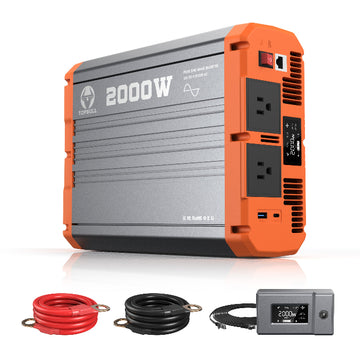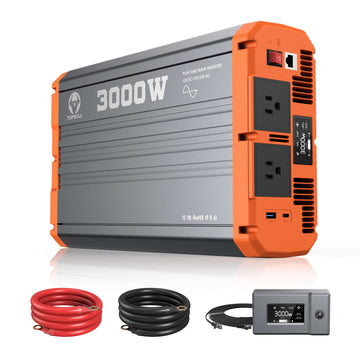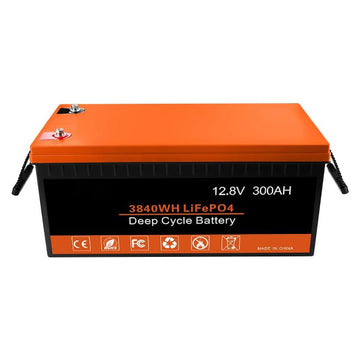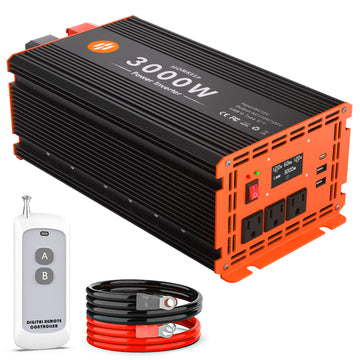Power inverters are critical components in a variety of applications, from solar systems to off-grid power solutions. Keeping inverters in top condition is critical to extending their life and improving their performance. In this guide, we'll explore the basics of inverter repair and maintenance, common issues, and expert tips to keep your system running smoothly.
Why power inverter repair and maintenance is critical
Extending the life of the inverter
Regular cleaning and inspection can prevent dust accumulation and deterioration of parts, extending the life of the equipment. Timely repair of minor problems can prevent faults from spreading and causing irreversible damage to the entire system.
Improve system efficiency
The inverter is the key link in the energy conversion process, and its performance directly affects the energy utilization rate. A well-maintained inverter can convert DC power to AC power as efficiently as possible, eliminating energy waste.
Regular inspections and maintenance can also minimize system downtime due to equipment failure, ensuring continuity of power.
Avoid costly repairs
Many problems with inverters can be detected early with regular inspections, such as overheating, abnormal output voltages, or damaged fans. If early warning signs are ignored, these minor problems can develop into major failures, resulting in costly repairs or replacements.
Inverter common problems and repairs
- The inverter cannot be turned on:
If it is difficult to turn on the drive, do not repair the drive immediately, but follow the steps below:
Check that the inverter is connected to a DC power source (battery) that is working properly and has sufficient voltage. If this is not the case, it may be helpful to check the battery terminals for looseness or corrosion, as this usually interferes with normal current flow. If there is no corrosion or looseness, check that the fuse is not blown, and if so, replace it with one of the same size. However, if the control circuit is faulty, contact a service professional for inspection and replacement of components.
- Error messages
Error messages can often help identify the source of a problem, but sometimes they are not clear. Before calling for service, carefully review the error messages on the inverter display. In most cases, the display will indicate the specific cause of the problem. In addition, the user's manual usually contains an explanation of the error code and possible solutions.
In some cases, simply resetting the unit can clear the error message and restore normal operation, which can prevent unnecessary repairs. Therefore, if you encounter an error message, trying a simple troubleshooting and reset first can save time and repair costs.
- Overheating:
Overheating is a common problem with inverters and is usually caused by dust or obstructions in the inverter vents, which need to be cleaned regularly. If the temperature of the environment in which the inverter is located is too high, the cooling system may not be effective in reducing the temperature of the unit, especially during hot summer months or if there is poor indoor air circulation. This situation may require consideration of temporary inverter cooling measures or moving the inverter to a cooler area.
For safety reasons, the drive must not be repaired if there is any suspicion of internal damage or fire hazard and should be referred to a qualified technician.
- Decreased energy yield
If the problem requiring inverter repair is a drop in energy output, make sure the DC input voltage to the batteries is within the inverter's acceptable range. In many cases, a drop in energy output can also be the result of an overload. If the inverter is powering many devices, it may be overloaded. A simple solution to this problem is to reduce the number of devices and the energy yield may increase again.
Loose or corroded cable connections can also reduce the efficiency of the power transfer, which can affect the output of the inverter. This often occurs during long periods of operation or in environments with high humidity. You must check all cable connections from the battery to the inverter to ensure that they are tight and free of corrosion. If you find loose connections or damaged cables, repair or replace the cables immediately.
In addition, for solar inverters, a drop in energy yield can also be related to the performance of the PV panels or the lighting conditions. If the efficiency of the solar panels decreases or shading problems occur frequently, the input power to the inverter will be reduced, resulting in a decrease in yield.
Check the solar panels for shading, such as dust, leaves, or other obstructions, and clean the panel surface. If the PV panels are old or damaged, consider replacing or adding more panels to increase the power input.
- Unusual noise
If an inverter makes an unusual noise, such as an unusual humming or vibrating sound, it is usually an indication that there may be a problem with the internal components of the unit. Such a situation requires attention, as the noise may signal a potential malfunction or impending component damage.
Due to the complexity and potential risk of the problem, it is recommended that you do not attempt to troubleshoot or repair the problem yourself. Instead, contact a professional technician as soon as possible for a thorough inspection and repair to ensure the safety and stability of your equipment.
Tips for maximizing inverter performance and longevity
The following tips and maintenance will help ensure that your inverter operates efficiently and extends its life:
Choose the right inverter:
Select an inverter that matches the load according to the power demand to avoid premature damage to the equipment due to long-term overload operation.
Install the inverter correctly:
- Avoid direct sunlight and high temperatures in the inverter installation area, instead consider installing in a cool, dry, and well-ventilated area.
- Ensure that the installation location is away from flammable materials and leave enough space for the equipment to dissipate heat.
- Use cables that meet specifications to connect the equipment, and make sure that the cables are securely connected and not loose.
Regular inspection and maintenance:
- Periodically remove dust from inverter vents and clean surfaces to keep the inverter clean, ensure proper airflow, prevent overheating, and prevent inverter corrosion.
- Regularly check the inverter display or monitoring system, pay attention to abnormal messages or error codes, and deal with them promptly.
- Check cable connections and keep connections between the inverter, batteries, and AC output tight and free of corrosion.
Managing Loads
- Ensure that the total power of the equipment powered by the inverter is within its rated power range and avoid overloaded operation. This can cause the inverter to overheat and lead to total damage or even fire.
- When using multiple devices, try to run the higher-powered devices at different times of the day to reduce the load pressure.
- Turn off the power when the inverter is not in use to minimize unnecessary battery consumption and wear and tear on the devices.
When to seek professional help
While some inverter problems can be troubleshooted or fixed by yourself, there are some situations where you will need the help of a professional technician to ensure the safety of your equipment and the effectiveness of your repairs. The following are common scenarios where professional assistance is required:
Internal component damage: If there are any signs of internal component failure, such as a burning smell, smoke, or unusual sparking from the unit, it is important to stop using the unit immediately and contact a professional technician for inspection and repair. These types of problems may involve serious electrical malfunctions and may pose a safety hazard if not handled properly.
Complex repair requirements: If the problem involves the inverter's circuit boards, specialized internal components, or the need to replace high-precision parts, it is recommended that you do not attempt repairs yourself. Professionals have the knowledge, experience, and tools to perform complex repairs safely and accurately to avoid further damage to the equipment.
Conclusion
Inverter repair and maintenance is an essential practice to ensure that your system operates at peak performance. Whether it's troubleshooting common problems or performing routine maintenance, a proactive attitude can help you avoid unnecessary, costly expenses and extend the life of your inverter. By following the tips in this guide, you can enjoy reliable, efficient power for years to come.
















